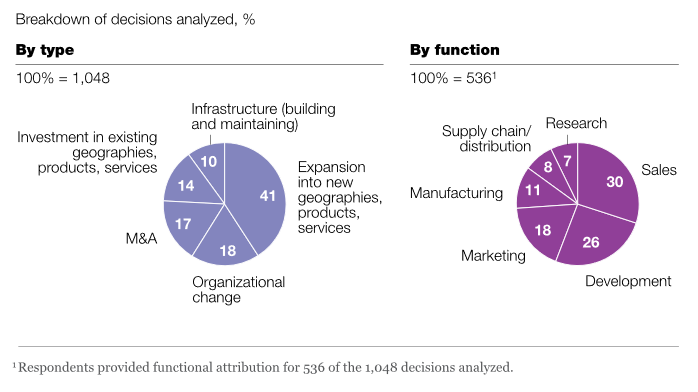17, October 2018
The Case for Behavioral Strategy

By Dan Lovallo and Olivier Sibony
Left unchecked, subconscious biases will undermine strategic decision making. Here’s how to counter them and improve corporate performance.
Once heretical, behavioral economics is now mainstream. Money managers employ its insights about the limits of rationality in understanding investor behavior and exploiting stock-pricing anomalies. Policy makers use behavioral principles to boost participation in retirement-savings plans. Marketers now understand why some promotions entice consumers and others don’t.
Yet very few corporate strategists making important decisions consciously take into account the cognitive biases—systematic tendencies to deviate from rational calculations—revealed by behavioral economics. It’s easy to see why: unlike in fields such as finance and marketing, where executives can use psychology to make the most of the biases residing in others, in strategic decision making leaders need to recognize their ownbiases. So despite growing awareness of behavioral economics and numerous efforts by management writers, including ourselves, to make the case for its application, most executives have a justifiably difficult time knowing how to harness its power.1
This is not to say that executives think their strategic decisions are perfect. In a recent McKinsey Quarterly survey of 2,207 executives, only 28 percent said that the quality of strategic decisions in their companies was generally good, 60 percent thought that bad decisions were about as frequent as good ones, and the remaining 12 percent thought good decisions were altogether infrequent.2 Our candid conversations with senior executives behind closed doors reveal a similar unease with the quality of decision making and confirm the significant body of research indicating that cognitive biases affect the most important strategic decisions made by the smartest managers in the best companies. Mergers routinely fail to deliver the expected synergies.3Strategic plans often ignore competitive responses.4 And large investment projects are over budget and over time—over and over again.5
In this article, we share the results of new research quantifying the financial benefits of processes that “debias” strategic decisions. The size of this prize makes a strong case for practicing behavioral strategy—a style of strategic decision making that incorporates the lessons of psychology. It starts with the recognition that even if we try, like Baron Münchhausen, to escape the swamp of biases by pulling ourselves up by our own hair, we are unlikely to succeed. Instead, we need new norms for activities such as managing meetings (for more on running unbiased meetings, see “Taking the bias out of meetings”), gathering data, discussing analogies, and stimulating debate that together can diminish the impact of cognitive biases on critical decisions. To support those new norms, we also need a simple language for recognizing and discussing biases, one that is grounded in the reality of corporate life, as opposed to the sometimes-arcane language of academia. All this represents a significant commitment and, in some organizations, a profound cultural change.
The value of good decision processes
Think of a large business decision your company made recently: a major acquisition, a large capital expenditure, a key technological choice, or a new-product launch. Three things went into it. The decision almost certainly involved some fact gathering and analysis. It relied on the insights and judgment of a number of executives (a number sometimes as small as one). And it was reached after a process—sometimes very formal, sometimes completely informal—turned the data and judgment into a decision.
 Our research indicates that, contrary to what one might assume, good analysis in the hands of managers who have good judgment won’t naturally yield good decisions. The third ingredient—the process—is also crucial. We discovered this by asking managers to report on both the nature of an important decision and the process through which it was reached. In all, we studied 1,048 major decisions made over the past five years, including investments in new products, M&A decisions, and large capital expenditures (Exhibit 1).
Our research indicates that, contrary to what one might assume, good analysis in the hands of managers who have good judgment won’t naturally yield good decisions. The third ingredient—the process—is also crucial. We discovered this by asking managers to report on both the nature of an important decision and the process through which it was reached. In all, we studied 1,048 major decisions made over the past five years, including investments in new products, M&A decisions, and large capital expenditures (Exhibit 1).
Click here to read complete blog.